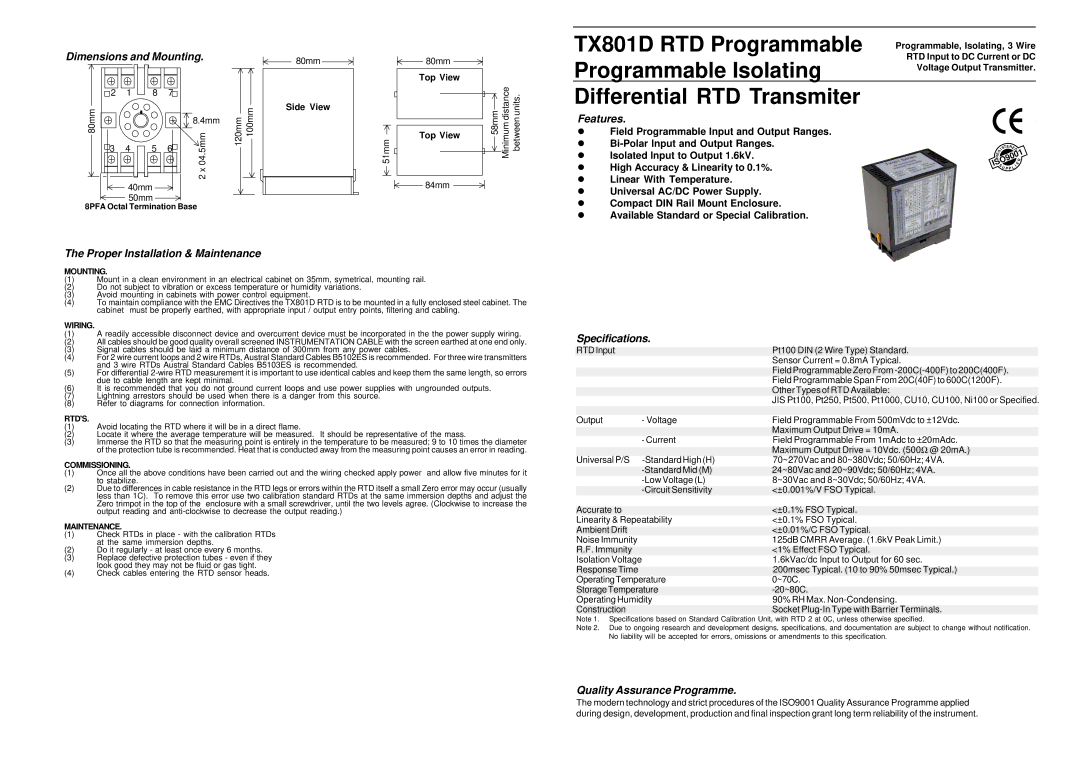TX801D RTD specifications
The Omega Engineering TX801D RTD is a remarkable temperature sensing device widely recognized for its accuracy, durability, and advanced features. As part of Omega's extensive line of temperature measurement solutions, the TX801D is specifically designed to provide reliable temperature readings in industrial and scientific applications.One of the main features of the TX801D RTD is its high precision measurement capability. With a nominal resistance of 100 ohms at 0°C, it delivers outstanding accuracy in temperature measurements. The device typically conforms to the Class A tolerance as per IEC 60751 standards, ensuring a precision of ±0.15°C over the standard temperature range. This precision makes it ideal for processes requiring stringent temperature control.
The TX801D utilizes a thin-film technology for its sensing element, which contributes to its quick response time and exceptional stability. Thin-film RTDs are known for their robustness and reliability, delivering consistent performance even in harsh environments. Furthermore, the device exhibits excellent linearity, enhancing its capability to be used in various applications without the need for extensive calibration.
Temperature range is a crucial characteristic of any RTD sensor. The TX801D can measure temperatures ranging from -200°C to 650°C, making it suitable for a wide array of applications in industries such as HVAC, food processing, and chemical manufacturing. This versatility enables users to implement the TX801D in diverse setups, from cryogenic temperatures to high-heat environments.
In terms of construction, the TX801D RTD is available in a variety of configurations, including different probe lengths, diameters, and materials such as stainless steel. This customization allows for optimal installation in various environments, whether it be in liquid, gas, or solid mediums. The sensor head can also be fitted with various connectors to ensure compatibility with existing measurement systems.
Another significant feature of the TX801D RTD is its robust protection against environmental factors. Depending on the selected housing and materials, the RTD can withstand humidity, pressure, and even corrosive substances, attributing to its lasting performance and decreasing maintenance needs.
In conclusion, the Omega Engineering TX801D RTD combines precision, durability, and versatility, making it an excellent choice for a wide range of temperature measuring applications. Its advanced thin-film technology, wide temperature range, and robust construction characteristics position it as a reliable sensor in both industrial and scientific fields. With the TX801D, users can be confident in their temperature measurements, promoting efficiency and safety in their operations.

